Get PeakVisor App
Sign In
Search by GPS coordinates
- Latitude
- ° ' ''
- Longitude
- ° ' ''
- Units of Length

Yes
Cancel
Share ×

Scan the QR code and open PeakVisor on your phone
❤ Wishlist ×
Choose
Delete
Situated on the southwest coast of Taiwan, Taijiang National Park (台江國家公園) is a stunning protected area that’s home to jungle-esque mangrove wetlands, layered sand banks, peaceful lagoons, and reflective salt fields. There is one named mountain in the borders of Taijiang National Park, Mu Shan (木山), which stands at 15 metres (49 ft) in elevation.
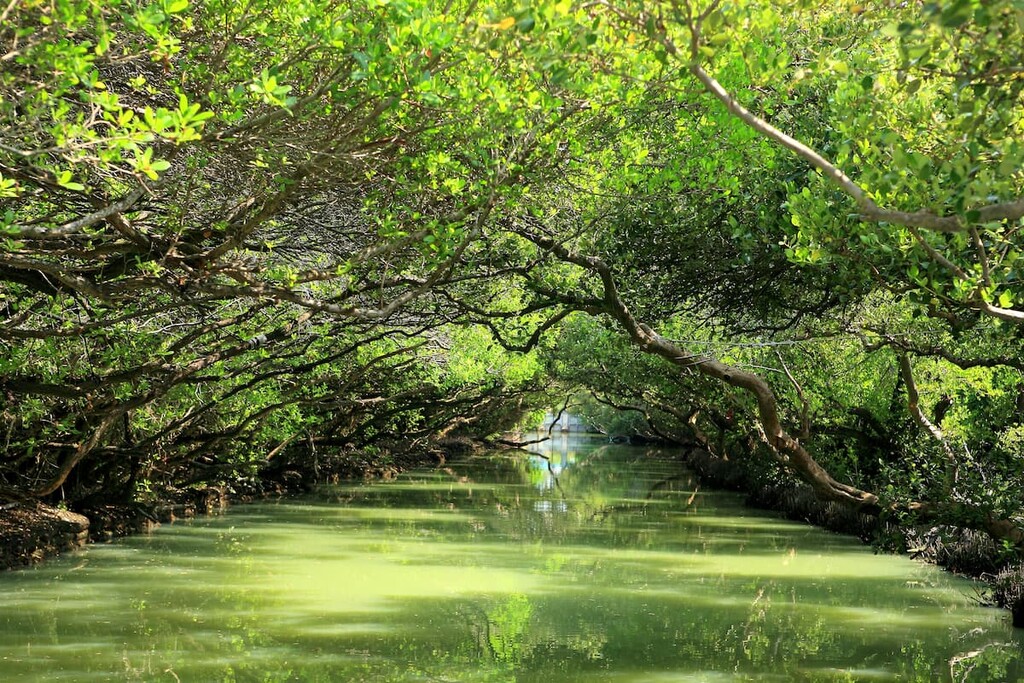
Taijiang National Park is located near Tainan City (台南市) on the island of Taiwan and the headquarters of the park is located in the Annan District (安南區). Covering a total area of 393 sq km (152 sq mi), of which 49 sq km (19 sq mi) is land and 344 sq km (133 sq mi) is water, the park is defined by both its terrestrial and marine environments.
Taijiang National Park contains three key characteristics: ecological biodiversity, cultural history, and a strong salt-mining and fishing industry.
The small portion of land area in the park encompasses public lands that stretch from the Yanshui River to Zengwen River. It also includes the nearby Tainan Black-Faced Spoonbill Reserve and Cigu Lagoon.
The vast marine coastal waters of the park consist of a long stretch of water that extends along 20 metre (66 ft) isobaths from the shoreline. It is approximately 54 km (34 mi) in length and 5 km (3 mi) in width, spanning a distance from the Yanshui River to Dongchi Island in the Penghu Archipelago.
This stretch of water was once used as the main water route for early Han settlers that were making their journey from Dongchi Island to Luerman, an area of early settlement in Taijiang National Park.
Within Taijiang National Park’s boundaries lies the westernmost point of Taiwan, which is home to Guosheng Lighthouse.

Taijiang National Park is situated to the south of the steamy natural Guanziling Hot Spring (關子嶺溫泉) in Chiayi County, and northwest of the park is the misty mountains of Alishan National Scenic Area (阿里山國家風景區) in Nantou County. Lying southwest of the park is the butterfly filled area of Maolin National Scenic Area (茂林國家風景區)in the Kaohsiung City area.
Taijiang National Park’s coastal features are arguably its most stunning attraction. The vast tidal flats, sand banks, and overgrown forested wetlands of the region all work together to create the landscape that we see in the park today.
The westward flowing rivers of the park make their way down to the ocean, carrying a large amount of sand in the process. Upon reaching the ocean, the speed of the river dramatically slows, and this abrupt change in speed causes the park’s rivers to deposit this sand, resulting in a build-up of sediment along the mouth of each river.
As a result of the prevailing winds and the forceful movements of the tides and waves, the sediments along the river mouth have created sand banks and tidal flats in the park.
Taijiang National Park also contains four main wetland areas: Zengwen River Mouth, Sicao Wetlands, Qigu Salt Flats, and the Yanshui River.
The Zengwen River Mouth contains approximately 3,2 sq km (12 sq mi) of nutrient rich wetlands, of which 3 sq km (1 sq mi) has been designated to a wildlife reserve for black-faced spoonbills.
Meanwhile, the Sicao wetlands cover some 5 sq km (2 sq mi). This wetland was once originally the small transitional islands of Beishanwei and Nanshan along the southern parts of the Taijiang Inland Sea.
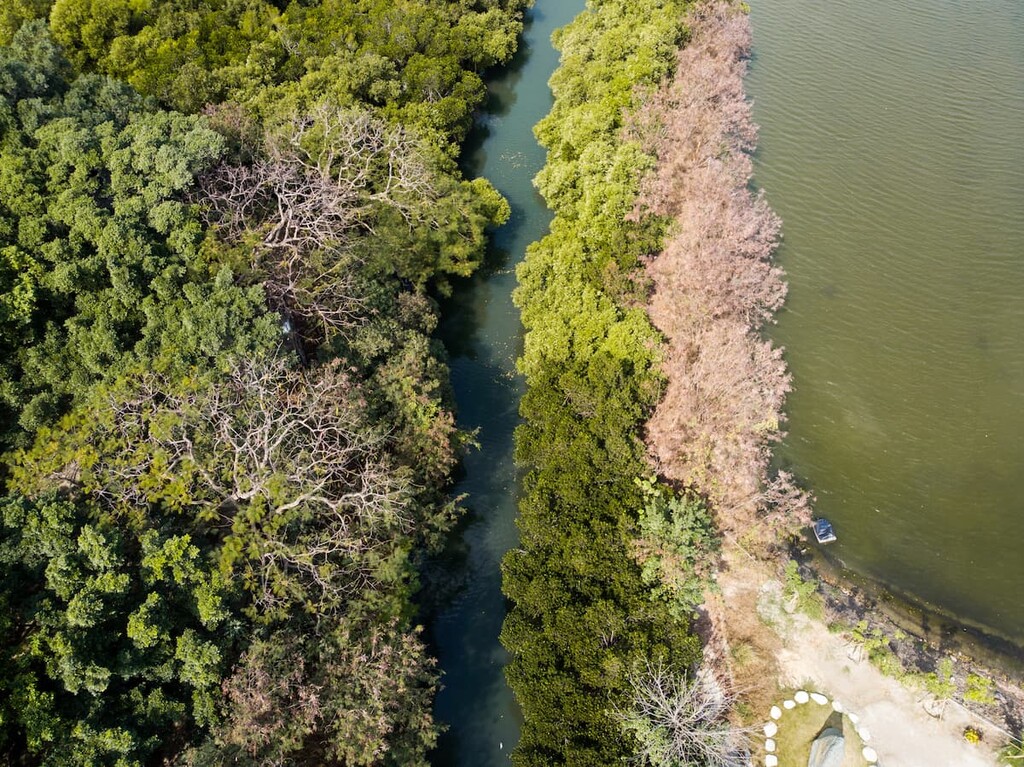
The floods of 1823 overpowered the sediment-heavy upstream river waters of the Zengwen River, diverging the river course and creating new land in the Taijiang Sea from deposited sediment. The emergence of this new land thus divided the sea into three saltwater lagoons: Kunshen, Sicao, and Cigu Lagoons.
The Cigu Salt Flats is a 30 sq km (12 sq mi) area of lagoon and salt fields. It is now a conversation area that’s designed to preserve the natural salt in the region from being extracted for commercial use in local steelworks and oil refineries. Furthermore, the Yanshui River spans 6 sq km (2 sq mi) and due to the heavy presence of intermediate egrets inhabiting this area, a new population of egrets has developed in southwestern Taiwan.
Much of Taijiang National Park is dominated by the Taijiang Inland Sea. Therefore, the fauna in the park are mostly marine animals, but there are some terrestrial animals that live on the small portion of land within the park.
In the Zengwen River and Luerman River deltas, some 205 species of shellfish, 240 species of fish, and 49 species of crab, including the Uno formosensis which is endemic to Taiwan, occupy the waters. The coastal Yanshui River is the only place in Taiwan where such 10 fiddler crabs can be found.
Out of the 34 cetacean species that have been sighted in Taiwan’s waters, 21 species have been recorded in Taijiang National Park. Additionally, the wetlands of Taijiang National Park are also home to 5 species of amphibians, and another 5 species of reptiles, of which the Chinese bullfrog, Guenther’s frog, Indian bullfrog, Stejneger’s grass lizard, striped-tailed rat snake, and Russell’s viper are both rare and protected species.
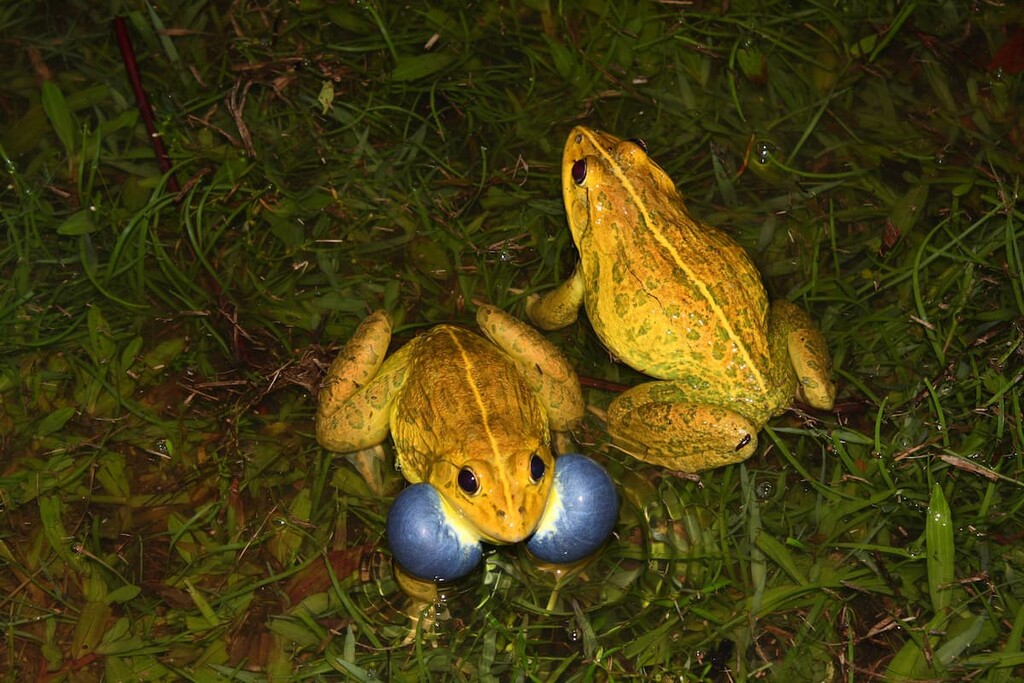
As the borders of Taijiang National Park fall within the migratory route of Asian birds, the park is frequented each autumn and winter by the black-faced spoonbill, Chinese goshawk, Kentish plover, black winged stilt, eastern curlew, peregrine falcon.
While 75% of the bird population in the park are migratory species, more than 200 bird species have been sighted within the park’s areas. A total of 21 of these birds are protected species, including the black-faced spoonbill.
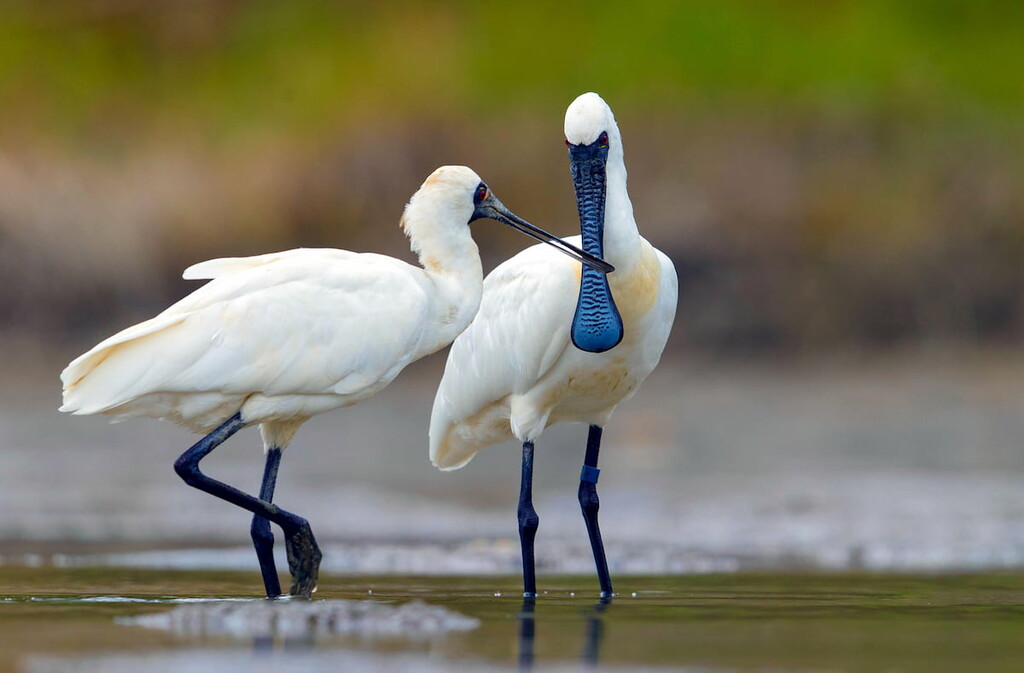
Within the park, 11 species of small non-forest mammals have been recorded. These include the Japanese house bat, house shrew, and Taiwan bandicoot rat.
Since the park has relatively little forest cover, it is an important habitat for terrestrial invertebrates. Indeed, some 26 species of fireflies and dragonflies have been documented in the park.
Plant restoration has flourished in Taijiang National Park throughout the recent years due to efforts at environmental conservation. There are four distinct types of vegetation found within the boundaries of the park: coastal windbreak forest, psammophyte and halophyte, plants around fishponds, and mangrove forest.
Woody and herb plants like beefwood, Cuban bast and black nightshade are the primary types of vegetation within the coastal windbreak forest, which stretches from the coastal border of the Zengwen estuary to the northern border of Erren estuary. This fertile area has halved in size as a result of road construction and land salinisation, however it is currently the focus of a restoration process that seeks to save the fecund soil of this area.
Psammophyte and halophyte plants are versatile and headstrong, withstanding the brutal seaside conditions of violent waves, gushing winds, unrelenting sunlight, and sparse rainfall. Plants such as the seahorse vine, woolly grass, sea purslane, morning glory, and coastal water hyssop all fare well in these coastal conditions.
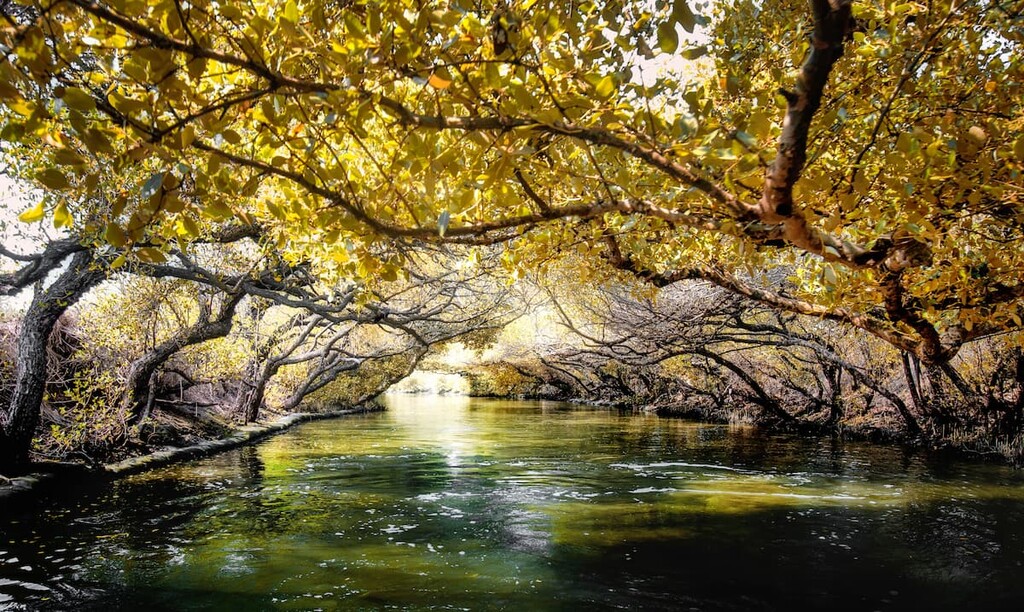
Some of the many plants that can be found around fishponds in the park include the paspalum vaginatum, which grows close to water, and the achyranthes aspera and white popinac, which are generally found further up the riverbank.
The oldest mangrove forest in Taiwan is also found between the Yanshui estuary within the park to the Sea View Bridge. This forest contains four species of mangrove, including long-stemmed rhizophora stylosa, lumnitzera racemosa, white mangrove, and kandelia candel druce.
Taijiang National Park became the eighth national park in Taiwan on 12 December 2009, with the intent of protecting the wilting rich natural resources of the area.
Taijiang National Park is one of the primary places of settlement of the Han people after they traversed the Taiwan Strait from Fujian and Guangdong in China. From as early as 1623, the Han people who settled in the region relied on the rich maritime resources of Taijiang, sustaining themselves on fishing, salt mining, and fish farming.
Before the migration of the Han people, the Pingpu tribe inhabited the area of Tainan Plain, while the Dawelong tribe resided in the midstream area of the Zengwen River about 300 to 400 years ago.

In 1661, the area that is now Taijiang National Park was a battleground against the forces led by Zheng Chenggong, also known as Koxinga, against earlier Dutch settlers. Zheng Chenggong ruled the kingdom of Yanping in the Fujian province of China, as a Ming loyalist. Upon the transition from the Ming to the Qing Dynasty, Zheng resisted the Qing Dynasty’s new initiative of forced inland migration, thus leading him to gather a force of 25,000 soldiers to attack the Dutch hold of Tainan, to create a stronghold of his own in this region.
Zheng’s troops defeated the Dutch who were forced to flee the area, an event that marked the earliest known defeat of Western colonial powers in Asia.
In the aftermath of this defeat, Tainan was designated as a regional capital by the Zheng prefecture. Furthermore, Zheng’s soldiers settled in Tainan, which is how the Han settlements emerged in the Tainan area.
There are plenty of opportunities to take in the natural beauty of the coastal wetlands, lagoons, tidal flats, and sand dunes in Taijiang National Park. Here are some of the best hiking areas to check out in the park:
Situated in the Sicao Wetlands lies an idyllic tunnel bordered by overarching branches of mangrove trees framing the emerald reflective waters known as Sicao Mangrove Green Tunnel (四草紅樹林綠色隧道). Four types of mangrove species are found along the banks of this mesmerising tunnel, while fiddler crabs can be spotted furiously tilling the land.
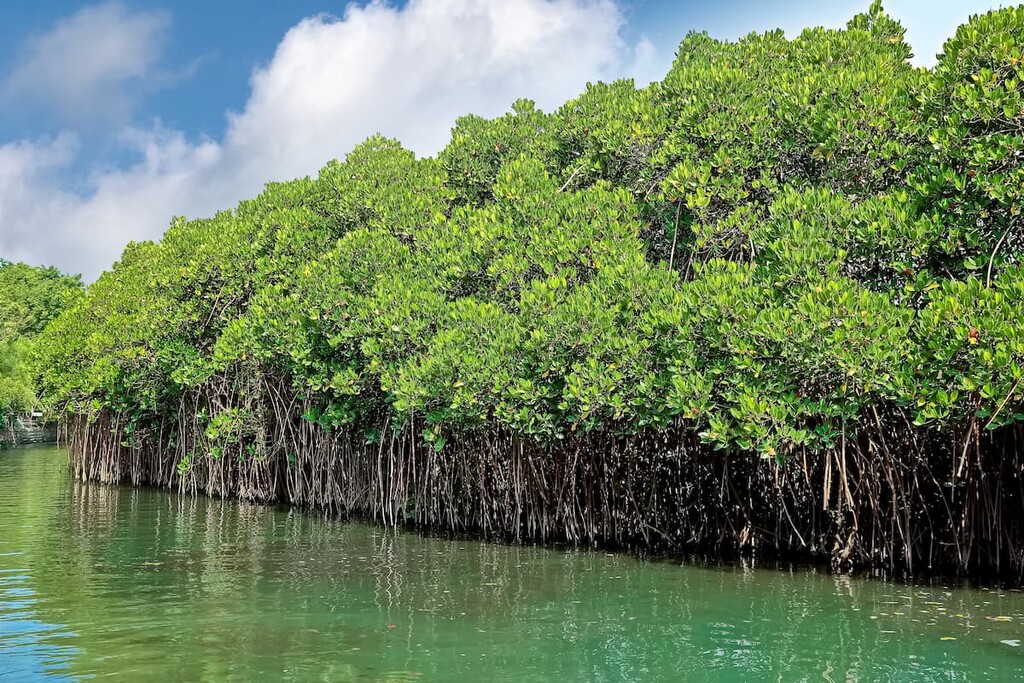
This peaceful stretch of still water has been granted the nickname ‘Little Amazon River’ in homage to the dense forest that frames the waters edge. Bamboo rafts journey daily into the tunnel where tourists are provided with the opportunity to experience the serenity and tranquillity that the rampant foliage and calm water creates.
Mornings are the preferred time to witness the Sicao Mangrove Green Tunnel as the soft morning light gently illuminates the scenery and strips of sunlight escape through the thick foliage, caressing the still surface of the water. Differing shades of green leaves and sweeping low hanging branches gracefully stretch above the water, and if tourists do not duck in time, they may be met with a sudden smack in the face from these unassumingly brazen branches.
This scenic 10 km (6 mi) bicycle path starts in the Anping District (安平區) of Tainan City. From there, cyclists embark on their journey toward Taijiang National Park.
After passing the forested mangrove wetlands and marvelling at the rich biodiversity of the area, cyclists on this path make their way toward Yanshui Creek Estuary and Jianan Canal while passing by fish ponds, abandoned salt farms, swamps and sand shoals on their leisurely ride through the park.
The Tainan City government has also agreed to make a collective effort in building a 45 km (28 mi) bicycle path through Taijiang National Park. so, the bike paths in the region are currently being expanded in an effort to create improved cycling opportunities.
Located nearby the entrance to the Sicao Mangrove Green Tunnel sits the imposing grandeur of Sicao Dazhong Temple (四草大眾廟). This masterpiece is believed to have been erected about 200 to 300 years ago; however, due to the loss of records over time, much about the history of this temple is unknown.

What is known, however, is that this temple has been rebuilt several times and that its roof is a fine example of southern Chinese temple construction style. The majestic Sicao Dazhong Temple displays colourful and animated figures of dragons, lions, and phoenixes boldly lining the elaborate three-tiered roof.
Sicao Dazhong Temple honours the Marshal of the Sea who was once a Taiwan general of Koxinga. Known as Chen Tze, he was believed to be a fearless warrior, having defeated over 300 Dutch soldiers and having won numerous other battles during his life. However, after being betrayed by his own people, he drowned himself in the sea.
A shrine was established to honor the Taiwan general, and the title Marshal of the Sea was bestowed posthumously upon him to praise him for his exceptional military service.
The sweeping flat expanse of the lagoon mirrors the ever-sunny blue Taiwanese skies, while the fishing nets create patterns in the water with zig zags and parallel lines, fashioning a geometric motif in the smooth calm waters.
Located in the Cigu Township, the vast 14 sq km (5 sq mi) of water makes Cigu Lagoon (七股泻湖) the largest lagoon in Taiwan. Cigu Lagoon is quite salty, which makes it a perfect spot for harnessing salt, catching fish, and cultivating oysters.
Cigu Lagoon was once home to the largest salt industry in Taiwan; however, the waters of the lagoon shrunk from 100 sq km (39 sq mi) to 14 sq km (5 sq mi) in a mere 20 years due to the over-extraction of salt from the area.
Environmentalists fear that the waters will dry up in the next 20 years if the region is not adequately preserved. Thus, hiking and biking trails and boat routes are all planned in accordance with environmentally friendly protection of the natural habitat of the park.
Cigu Lagoon consists of a wide assortment of marine creatures. These marine animals serve as food to the black-faced spoonbills, which are best observed in the north bank of the lagoon in autumn and winter.
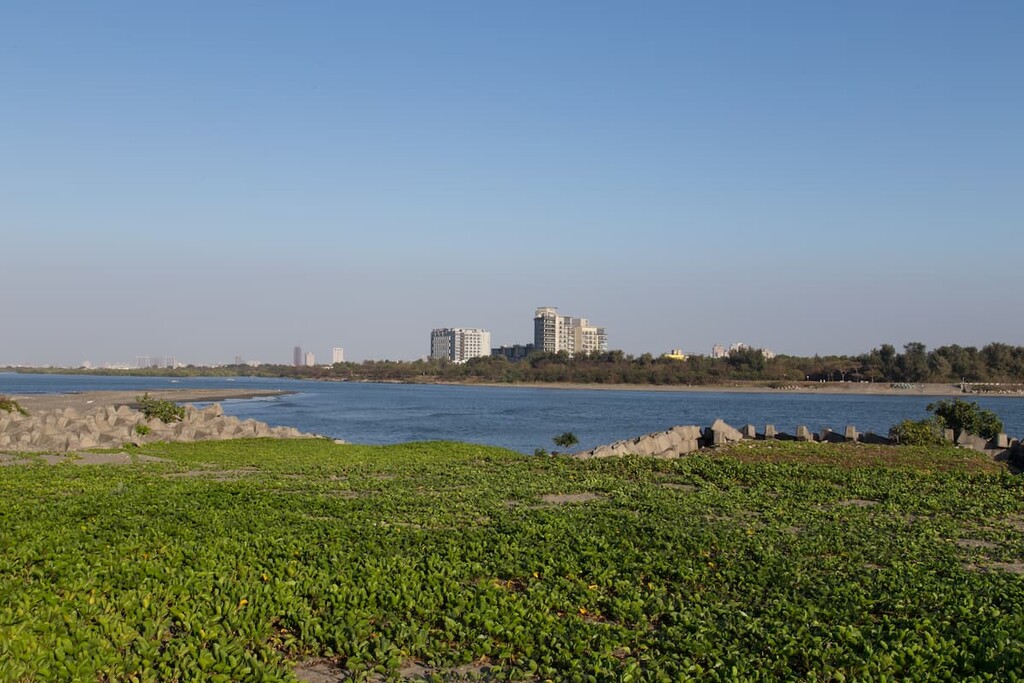
The Black-faced spoonbill Reserve (黑面琵鷺野生動物保護區), which preserves and protects the alarmingly rare bird species in the region, is located south of the Cigu Lagoon at the mouth of the Zengwen River.
Within the reserve, there are over 3,000 black-faced spoonbills. Furthermore, an average of 1,000 birds migrate from the Korean Peninsula and northern China into the wetlands of Taijiang National Park during the winter months.
Black-faced spoonbill have a long neck and white feathered body, like you might see on a swan. Meanwhile, they have a burst of pale yellow feathers at the base of their neck. Elongated black legs help the black-faced spoonbills wade through high waters, and their ebony long spoon shaped beaks serves as inspiration for their name.
The reserve houses a birdwatching pavilion that is open to visitors in winter, the peak visitation season for anyone that wants to see the black-faced spoonbill firsthand. Visitors can observe these elegant birds through high-powered binoculars that are offered at this viewing pavilion.
Being nocturnal animals, black-faced spoonbill search for food at nighttime. Meanwhile, during the day, they rest and play in the marshy wetlands. It is a spectacular sight to witness the bright white birds splash in the light blue silted waters against the subtle glow of the soft afternoon sun.

In addition to the black-faced spoonbill, some 200 other bird species also flock to the mouth of the Zengwen River. The gull, snipe, turtledove, and Chinese bulbul are just a handful of other birds that can be spotted in these waters.
Resembling a vast, desolate desert, Dingtoue Sandbar (頂頭額沙洲) is located at the southern end of Cigu Island Sea. The sandbar itself is the result of the gradual accumulation of silt that was carried through westward flowing rivers and currents into the Taiwan Strait.
Due to its proximity to low-lying wetlands, lagoons, and mangrove forests, the sand dunes of the Dingtoue Sandbar rise up about as high as a three story building.
These sand dunes form the perimeter of Cigu Lagoon (alongisde the Qingshanang Sandbar and Wangzailiao Sandbar), as they create a natural barrier that breaks the forceful waves of the Taiwan Strait.
Listed as a grade II historic site, the battle remains of Sicao Fort (四草砲台), which was built during the First Opium War in 1840 to stop British forces from invading Taiwan, are well worth a visit.
Featuring 13 gun holes, this fort was initially a temporary structure, but it was later made permanent by the addition of solid granite to the outside of the fort walls. Furthermore, an additional layer of pebbles was erected inside the wall, adding to the sturdiness and strength of the fort.

While the fort is now a bordering wall to an elementary school, the disused barrier now features the addition of banyan roots growing over the manmade artillery war construction, creating a beautiful mix of history and nature.
Once an old lighthouse, but now just a concrete base of the former structure, this viewing deck offers panoramic views overlooking the surrounding areas of Chengxi Windbreak Forest and Dream Lake.
The windbreak forest was completed in the 1960s to serve as a shield to protect the soil from the salinity of salty seawater and to promote sand-bonding on the tidal flats of the Zengwen River.
Underground canals were also created through digging to allow the flow of freshwater to the tidal flats in an effort to reduce the sediment content of the soil, thus allowing vegetation to flourish. The result of this was the gradual emergence of forest marshes and mangroves sprouting along the tidal flats, displaying a dense jungle of emerald foliage.
The water storage pond is located just next to the Zengwen River Mouth at the edge of the windbreak forest. This pond is called Dream Lake due to its romantic appearance, calm and gentle waters, and luscious forest surroundings.
The singing chorus of Taiwan cicadas at twilight among the croaking of Gunther’s frogs and ornate-narrow mouthed toads add to the dreamlike ambience of the peaceful lake. Therefore, it’s worth checking out the beauty of the verdant windbreak forest and still lake at Chengxi Viewing Deck.
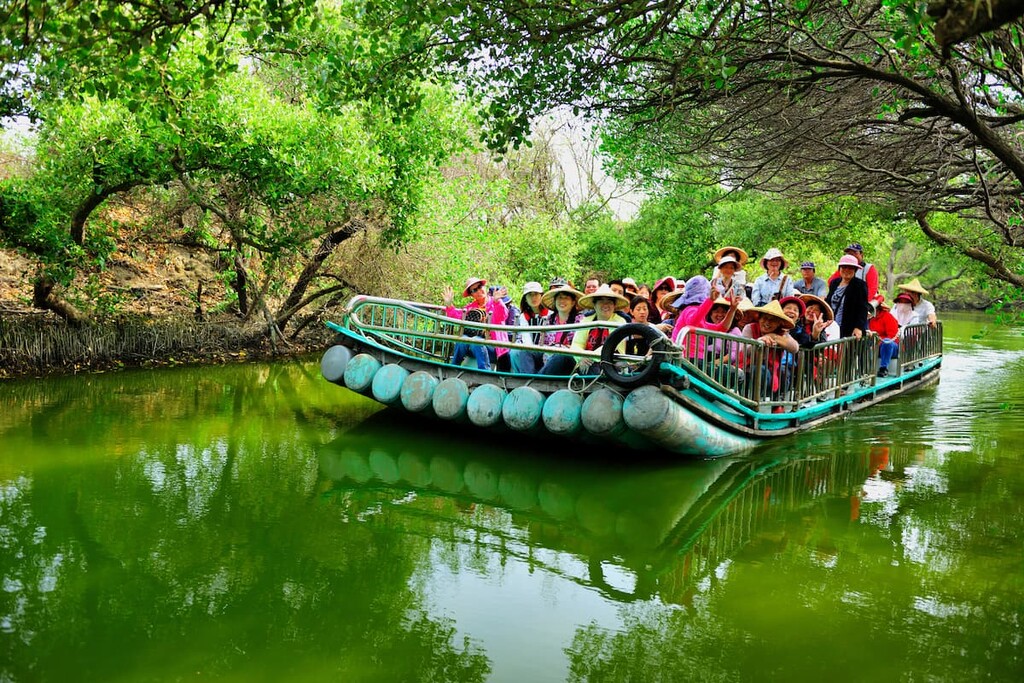
Looking for a place to stay in Taijiang National Park? Here are some of the best places to check out:
If you’re visiting Taijiang National Park, staying in Tainan is the most convenient option as the park is located within the city’s boundaries.
Within the city, the upscale Shangri-La’s Far Eastern Plaza Hotel offers the utmost luxury to its guests as it houses a sauna, fitness centre, an outdoor pool, and four different types of restaurants offering international to authentic Chinese cuisines. The hotel is conveniently located across the road from the back entrance of Tainan Train Station, so guests can catch a shuttle bus from the train station to make their way to Taijiang National Park.
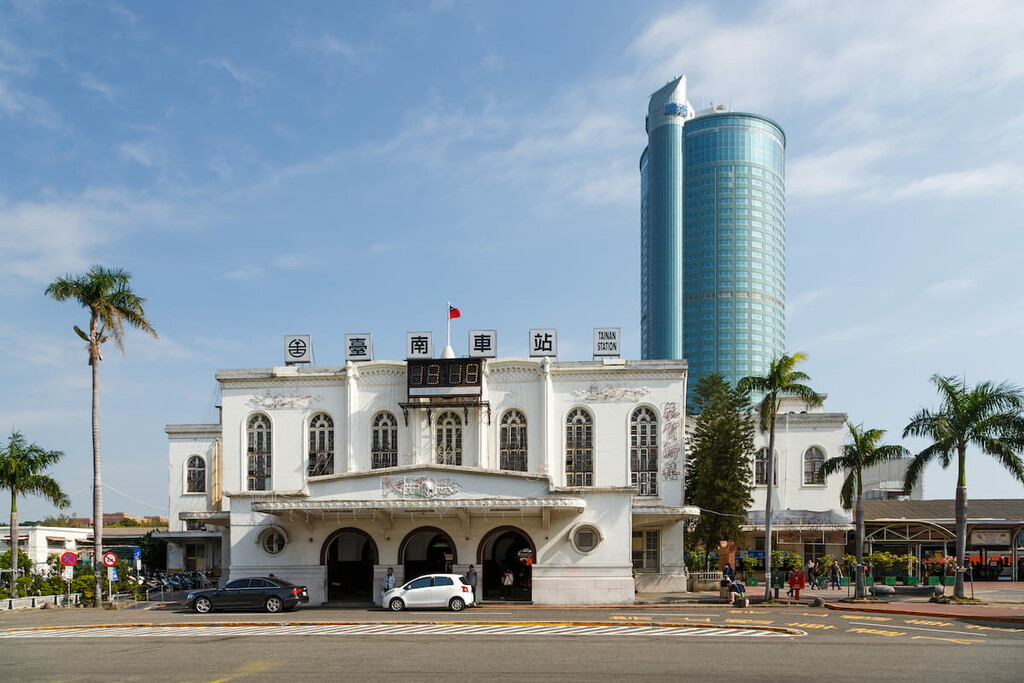
Zhongshan Park, a tranquil and green space within the bustling city centre is only 800 metres (2,625 ft) away from the hotel, while the vibrant strip of Dasyue Road has a wonderful selection of coffee shops, street food vendors, and clothing stores.
FX Hotel Tainan is a mid-range hotel located in the West Central District of Tainan that is situated a short taxi ride from Taijiang National Park. The facilities on offer at this modern stylish hotel are an on-site fitness centre, sun terrace, restaurant, and bicycles for hire. Guests can enjoy the eclectic city views mixed with high rise apartment blocks and elaborate temples.
At the more budget end of the scale is the 158 Hostel, which is praised for its clean and simply modern interior. The friendly staff working at this hostel are lauded for their hospitality, and the quiet environment of the hostel adds to its calming atmosphere. A tour desk at the hostel also offers a variety of tours in and around Tainan to see the attractions of this ancient city.
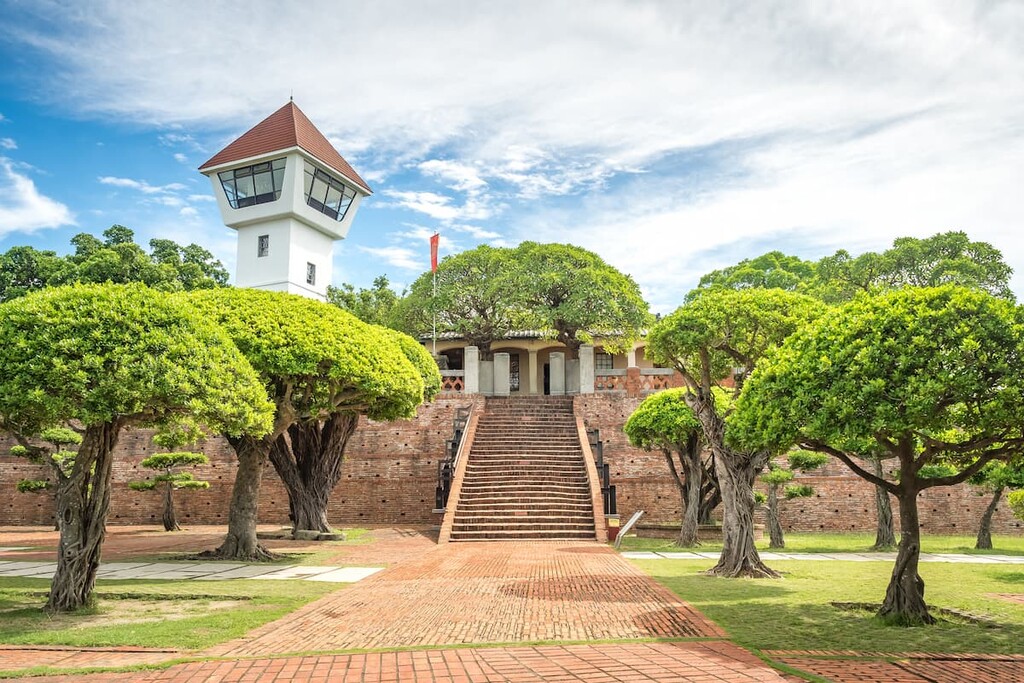
From the major cities of Taipei, Hsinchu, Taichung, Chiayi and Kaohsiung, take either the Taiwan High Speed Rail (HSR) or the express train to Tainan HSR Station or Tainan Train Station.
From Tainan HSR Station, hop on the HSR Shuttle Bus heading toward the Tainan City Government Route. Transfer at the Tainan Train Station to Shuttle 99, heading toward Taijiang National Park where you will get off the bus at Sicao Bridge West Station.
Alternatively, you can hail a taxi from Tainan Train Station or Tainan HSR Station to the headquarters of Taijiang National Park, which is situated on Sicao Boulevard. Or you can rent a car or scooter and drive to the park.
The distance from Tainan HSR Station to the headquarters of Taijiang National Park is 28 km (17 mi) over 48 minutes travel time. Tainan Train Station to the headquarters of Taijiang National Park has an average journey of 16 minutes.

Explore Taijiang National Park with the PeakVisor 3D Map and identify its summits.








